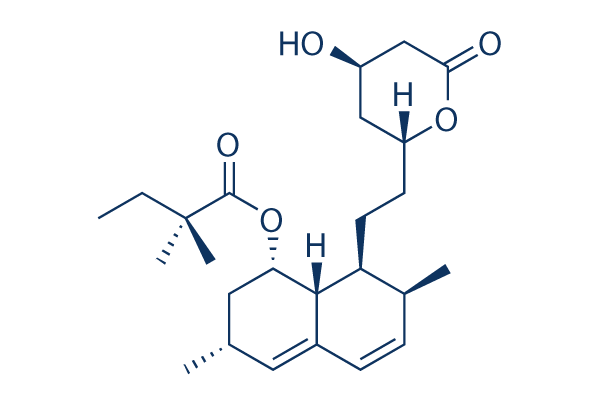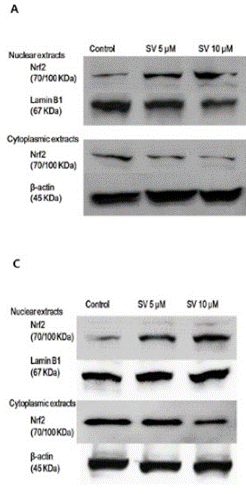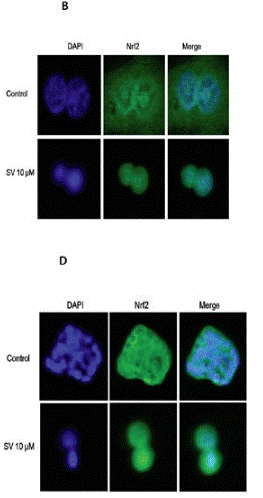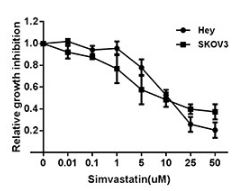
- Bioactive Compounds
- By Signaling Pathways
- PI3K/Akt/mTOR
- Epigenetics
- Methylation
- Immunology & Inflammation
- Protein Tyrosine Kinase
- Angiogenesis
- Apoptosis
- Autophagy
- ER stress & UPR
- JAK/STAT
- MAPK
- Cytoskeletal Signaling
- Cell Cycle
- TGF-beta/Smad
- Compound Libraries
- Popular Compound Libraries
- Customize Library
- Clinical and FDA-approved Related
- Bioactive Compound Libraries
- Inhibitor Related
- Natural Product Related
- Metabolism Related
- Cell Death Related
- By Signaling Pathway
- By Disease
- Anti-infection and Antiviral Related
- Neuronal and Immunology Related
- Fragment and Covalent Related
- FDA-approved Drug Library
- FDA-approved & Passed Phase I Drug Library
- Preclinical/Clinical Compound Library
- Bioactive Compound Library-I
- Bioactive Compound Library-Ⅱ
- Kinase Inhibitor Library
- Express-Pick Library
- Natural Product Library
- Human Endogenous Metabolite Compound Library
- Alkaloid Compound LibraryNew
- Angiogenesis Related compound Library
- Anti-Aging Compound Library
- Anti-alzheimer Disease Compound Library
- Antibiotics compound Library
- Anti-cancer Compound Library
- Anti-cancer Compound Library-Ⅱ
- Anti-cancer Metabolism Compound Library
- Anti-Cardiovascular Disease Compound Library
- Anti-diabetic Compound Library
- Anti-infection Compound Library
- Antioxidant Compound Library
- Anti-parasitic Compound Library
- Antiviral Compound Library
- Apoptosis Compound Library
- Autophagy Compound Library
- Calcium Channel Blocker LibraryNew
- Cambridge Cancer Compound Library
- Carbohydrate Metabolism Compound LibraryNew
- Cell Cycle compound library
- CNS-Penetrant Compound Library
- Covalent Inhibitor Library
- Cytokine Inhibitor LibraryNew
- Cytoskeletal Signaling Pathway Compound Library
- DNA Damage/DNA Repair compound Library
- Drug-like Compound Library
- Endoplasmic Reticulum Stress Compound Library
- Epigenetics Compound Library
- Exosome Secretion Related Compound LibraryNew
- FDA-approved Anticancer Drug LibraryNew
- Ferroptosis Compound Library
- Flavonoid Compound Library
- Fragment Library
- Glutamine Metabolism Compound Library
- Glycolysis Compound Library
- GPCR Compound Library
- Gut Microbial Metabolite Library
- HIF-1 Signaling Pathway Compound Library
- Highly Selective Inhibitor Library
- Histone modification compound library
- HTS Library for Drug Discovery
- Human Hormone Related Compound LibraryNew
- Human Transcription Factor Compound LibraryNew
- Immunology/Inflammation Compound Library
- Inhibitor Library
- Ion Channel Ligand Library
- JAK/STAT compound library
- Lipid Metabolism Compound LibraryNew
- Macrocyclic Compound Library
- MAPK Inhibitor Library
- Medicine Food Homology Compound Library
- Metabolism Compound Library
- Methylation Compound Library
- Mouse Metabolite Compound LibraryNew
- Natural Organic Compound Library
- Neuronal Signaling Compound Library
- NF-κB Signaling Compound Library
- Nucleoside Analogue Library
- Obesity Compound Library
- Oxidative Stress Compound LibraryNew
- Plant Extract Library
- Phenotypic Screening Library
- PI3K/Akt Inhibitor Library
- Protease Inhibitor Library
- Protein-protein Interaction Inhibitor Library
- Pyroptosis Compound Library
- Small Molecule Immuno-Oncology Compound Library
- Mitochondria-Targeted Compound LibraryNew
- Stem Cell Differentiation Compound LibraryNew
- Stem Cell Signaling Compound Library
- Natural Phenol Compound LibraryNew
- Natural Terpenoid Compound LibraryNew
- TGF-beta/Smad compound library
- Traditional Chinese Medicine Library
- Tyrosine Kinase Inhibitor Library
- Ubiquitination Compound Library
-
Cherry Picking
You can personalize your library with chemicals from within Selleck's inventory. Build the right library for your research endeavors by choosing from compounds in all of our available libraries.
Please contact us at [email protected] to customize your library.
You could select:
- Antibodies
- Bioreagents
- qPCR
- 2x SYBR Green qPCR Master Mix
- 2x SYBR Green qPCR Master Mix(Low ROX)
- 2x SYBR Green qPCR Master Mix(High ROX)
- Protein Assay
- Protein A/G Magnetic Beads for IP
- Anti-DYKDDDDK Tag magnetic beads
- Anti-DYKDDDDK Tag Affinity Gel
- Anti-Myc magnetic beads
- Anti-HA magnetic beads
- Poly DYKDDDDK Tag Peptide lyophilized powder
- Protease Inhibitor Cocktail
- Protease Inhibitor Cocktail (EDTA-Free, 100X in DMSO)
- Phosphatase Inhibitor Cocktail (2 Tubes, 100X)
- Cell Biology
- Cell Counting Kit-8 (CCK-8)
- Animal Experiment
- Mouse Direct PCR Kit (For Genotyping)
- New Products
- Contact Us
Simvastatin
Synonyms: MK 733
Simvastatin is a competitive inhibitor of HMG-CoA reductase with Ki of 0.1-0.2 nM in cell-free assays. Simvastatin induces ferroptosis, mitophagy, autophagy and apoptosis.

Simvastatin Chemical Structure
CAS: 79902-63-9
Selleck's Simvastatin has been cited by 65 publications
Purity & Quality Control
Batch:
Purity:
99.92%
99.92
Related compound libraries
Choose Selective HMG-CoA Reductase Inhibitors
Cell Data
| Cell Lines | Assay Type | Concentration | Incubation Time | Formulation | Activity Description | PMID |
|---|---|---|---|---|---|---|
| rat liver hepatocytes | Function assay | 4 h | Inhibition of cholesterol synthesis in rat liver hepatocytes after 4 hrs, IC50=1.3 nM | 17560788 | ||
| rat L6 cells | Function assay | Inhibition of cholesterol synthesis in rat L6 cells assessed as incorporation of [14C]acetate into cholesterol, IC50=0.027 μM | 18412317 | |||
| HepG2 cells | Function assay | In vitro inhibitory activity was evaluated on cholesterol biosynthesis in HepG2 cells, IC50=0.04 μM | 14741258 | |||
| HEK293 cells | Function assay | Inhibition of OATP1B1 (unknown origin) expressed in HEK293 cells using estradiol-17beta-glucuronide substrate, IC50=4.4 μM | 22587986 | |||
| human A549 cells | Cytotoxic assay | 72 h | Cytotoxicity against human A549 cells after 72 hrs by MTT assay, IC50=16.3 μM | 23570542 | ||
| human HS68 cells | Cytotoxic assay | Cytotoxicity against human HS68 cells after 72 hrs by MTT assay, IC50=26.4 μM | 23570542 | |||
| mouse MEF cells | Cytotoxic assay | Cytotoxicity against mouse MEF cells after 72 hrs by MTT assay, IC50=36.7 μM | 23570542 | |||
| RASMC cells | Function assay | 2 μM | 72 h | Inhibition of rat Ftase in RASMC cells assessed as reduction in Ras prenylation at 2 uM after 72 hrs by Western blot analysis | 21802946 | |
| Click to View More Cell Line Experimental Data | ||||||
Biological Activity
| Description | Simvastatin is a competitive inhibitor of HMG-CoA reductase with Ki of 0.1-0.2 nM in cell-free assays. Simvastatin induces ferroptosis, mitophagy, autophagy and apoptosis. | ||
|---|---|---|---|
| Targets |
|
| In vitro | ||||
| In vitro | Prior to use in cell assays, Simvastatin needs to be activated by NaOH in EtOH treatment. Simvastatin inhibits cholesterol synthesis in mouse L-M cell (fibroblast), rat H4II E cell (liver), and human Hep G2 cell (liver) with IC50 of 19.3 nM, 13.3 nM and 15.6 nM, respectively. [1] Simvastatin treatment leads to a dose-dependent increase in serine 473 phosphorylation of Akt within 30 minutes, with maximal phosphorylation occurring at 1.0 µM. Simvastatin (1.0 μM) enhances phosphorylation of the endogenous Akt substrate endothelial nitric oxide synthase (eNOS), inhibits serum-free media undergo apoptosis and accelerates vascular structure formation. [2] Simvastatin displays anti-inflammatory effects in vitro. Simvastatin (10 μM) reduces anti-CD3/anti-CD28 antibody-stimulated proliferation of PB-derived mononuclear cells and synovial fluid cells from rheumatoid arthritis blood, as well as IFN-γ release. Simvastatin (10 μM) suppresses cell-mediated macrophage TNF-γ release induced via cognate interactions by ~30%. [3] |
|||
|---|---|---|---|---|
| Kinase Assay | HMG-CoA reductase activity assay | |||
| The total volume of each assay is 95 μL and the reaction mixture contained 10 μL of the inhibiting compound to be tested and 85 μL of the incubating buffer containing 2 mg/mL liver microsomes, 0.1 M KH2PO4, pH 7.2, 5.7 mM dithiothreitol, 10 mM glucose-6-phosphate, 2 U/mL glucose-6-phosphate dehydrogenase, 1 mM NADP, 10 μM miconazole. Control experiments are done without NADPH generating system. All samples are incubated 10 min at 37 ℃ before addition of 5μL of substrate (unlabelled and 14C-HMG-3-hydroxy-3-methyl glutaryl CoA, final concentration 50 μM, 2.5 nCi/nmole). After 30 min at 37 ℃, the reaction is stopped by adding 27 μL 1N HCl and 20 μL of unlabelled mevalonolactone (200 μg/assay). The conversion of mevalonic acid to lactone is performed at room temperature for 60 min. | ||||
| Cell Research | Cell lines | HUVECs | ||
| Concentrations | 1 μM | |||
| Incubation Time | 30 minutes | |||
| Method | HUVECs were treated with simvastatin for 30 minutes. |
|||
| Experimental Result Images | Methods | Biomarkers | Images | PMID |
| Western blot | Nrf2 p-RB / Cyclin D1 / p21 / p27 / PCNA / CDC45 AMPK / p-AMPK / P70S6 / p-P70S6 / LC3 / Atg7 Bcl-2 / PARP / Caspase-3 / Cleaved Caspase-3 HMGCR |

|
27323826 | |
| Immunofluorescence | Nrf2 LC3A/B |

|
27323826 | |
| Growth inhibition assay | Cell viability |

|
26503475 | |
| In Vivo | ||
| In vivo |
Simvastatin orally administration inhibits the conversion of radiolabeled acetate to cholesterol with IC50 of 0.2 mg/kg. [1] Simvastatin (4 mg/day) orally administration for 13 weeks to rabbits fed an atherogenci cholesterol-rich diet, returns the cholesterol-induced increases in total cholesterol, LDL-cholesterol and HDL-cholesterol to normal level. [4] Simvastatin (6 mg/kg) produces an increase in LDL receptor-dependent binding and increases the number of hepatic LDL receptors in rabbits fed a diet containing 0.25% cholesterol. [5] Simvastatin influences inflammation independent of its effect on plasma cholesterol level. In cynomolgus monkeys consumed an atherogenic diet, Simvastatin (20 mg/kg/day) induces a 1.3-fold less macrophage content in lesions, and 2-fold less vascular cell adhesion molecule-1, interleukin-1beta, and tissue factor expression, companied by a 2.1-fold increases in lesional smooth muscle cell and collagen content. [6] |
|
|---|---|---|
| Animal Research | Animal Models | Male Japanese white rabbits |
| Dosages | 2.5, 5, & 10 mg/kg | |
| Administration | Oral | |
| NCT Number | Recruitment | Conditions | Sponsor/Collaborators | Start Date | Phases |
|---|---|---|---|---|---|
| NCT05771675 | Not yet recruiting | Recurrent Acute Pancreatitis|Chronic Pancreatitis | Cedars-Sinai Medical Center|United States Department of Defense | January 2024 | Early Phase 1 |
| NCT05542095 | Withdrawn | Olfactory Disorder|COVID-19 | Washington University School of Medicine|Duke University | May 1 2023 | Phase 1 |
| NCT05613400 | Enrolling by invitation | Diabetes Mellitus Type 2 | The University of Hong Kong | April 13 2022 | Phase 4 |
Chemical lnformation & Solubility
| Molecular Weight | 418.57 | Formula | C25H38O5 |
| CAS No. | 79902-63-9 | SDF | Download Simvastatin SDF |
| Smiles | CCC(C)(C)C(=O)OC1CC(C=C2C1C(C(C=C2)C)CCC3CC(CC(=O)O3)O)C | ||
| Storage (From the date of receipt) | |||
|
In vitro |
DMSO : 83 mg/mL ( (198.29 mM); Moisture-absorbing DMSO reduces solubility. Please use fresh DMSO.) Ethanol : 83 mg/mL Water : Insoluble |
Molecular Weight Calculator |
|
In vivo Add solvents to the product individually and in order. |
In vivo Formulation Calculator |
||||
Preparing Stock Solutions
Molarity Calculator
In vivo Formulation Calculator (Clear solution)
Step 1: Enter information below (Recommended: An additional animal making an allowance for loss during the experiment)
mg/kg
g
μL
Step 2: Enter the in vivo formulation (This is only the calculator, not formulation. Please contact us first if there is no in vivo formulation at the solubility Section.)
% DMSO
%
% Tween 80
% ddH2O
%DMSO
%
Calculation results:
Working concentration: mg/ml;
Method for preparing DMSO master liquid: mg drug pre-dissolved in μL DMSO ( Master liquid concentration mg/mL, Please contact us first if the concentration exceeds the DMSO solubility of the batch of drug. )
Method for preparing in vivo formulation: Take μL DMSO master liquid, next addμL PEG300, mix and clarify, next addμL Tween 80, mix and clarify, next add μL ddH2O, mix and clarify.
Method for preparing in vivo formulation: Take μL DMSO master liquid, next add μL Corn oil, mix and clarify.
Note: 1. Please make sure the liquid is clear before adding the next solvent.
2. Be sure to add the solvent(s) in order. You must ensure that the solution obtained, in the previous addition, is a clear solution before proceeding to add the next solvent. Physical methods such
as vortex, ultrasound or hot water bath can be used to aid dissolving.
Tech Support
Answers to questions you may have can be found in the inhibitor handling instructions. Topics include how to prepare stock solutions, how to store inhibitors, and issues that need special attention for cell-based assays and animal experiments.
Tel: +1-832-582-8158 Ext:3
If you have any other enquiries, please leave a message.
* Indicates a Required Field
Frequently Asked Questions
Question 1:
Can you please advise if Simvastatin has been tested effectively for in vivo use in mice? What solvent can be used to deliver Simvastatin in vivo?
Answer:
This compound is an oral drug and a lot of studies report its use in mice. According to this paper (http://atvb.ahajournals.org/content/21/1/115.full), 0.5% Methyl-cellulose can be used as the vehicle.
Question 2:
If any specific protocols exist for in vitro use, specifically any steps required to activate the compound?
Answer:
This product is supplied in an inactive form and requires treatment with NaOH in EtOH followed by neutralization to pH 7.2 for activation. Please find the details from the following reference: http://www.ncbi.nlm.nih.gov/pmc/articles/PMC2739764/.
Tags: buy Simvastatin | Simvastatin supplier | purchase Simvastatin | Simvastatin cost | Simvastatin manufacturer | order Simvastatin | Simvastatin distributor








































